
President Eisenhower signing HR7786, changing Armistice Day to Veterans
In 1938, seventy-five years ago this month, the United States Congress passed Congressional Act, 52SAT. 351; 5 U.S. Code Sec 87a., which officially established November 11 as “Armistice Day.” In 1919, President Woodrow Wilson had issued a Presidential Proclamation which established November 11 as “Armistice Day,” in honor of veterans of World War I; however, the 1938 Act would make the date a fixed holiday in United States law.
Following World War II, a veteran from Birmingham, Alabama, Raymond Weeks, began a campaign to rename “Armistice Day” to “Veterans Day,” and to have it be a day to honor all U.S. Armed Services’ veterans. General Dwight D. Eisenhower, Supreme Commander of Allied Forces in Europe, supported the idea, but it wouldn’t be until May, 1954, as the President of the United States, that he signed a bill that changed “Armistice Day” to “Veterans Day.”
Raymond Weeks was honored in 1982 with the Presidential Citizenship Award, and was proclaimed by President Ronald Reagan to be the “Father of Veterans Day.”
In remembrance of all men and women who have served in the United States Armed Forces, StrangeHistory.org has compiled a brief history on the last remaining veterans of foreign and domestic wars throughout United States history.
American Revolution:
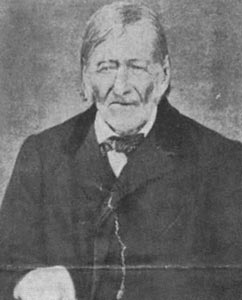
Daniel Frederick Bakeman: Last Surviving Soldier of American Revolution
Daniel Frederick Bakeman (October 9, 1759 – April 5, 1869) is commonly believed to have been the last surviving soldier of the American Revolution. In order for Bakeman to receive a Revolutionary War pension, Congress had to pass a bill that would allow for payment because Daniel F. Bakeman could not prove that he had fought in the war.
Additionally, Daniel and his wife Susan were married for 91 years and 12 days. They hold the record for the longest lasting marriage in America.
War of 1812:
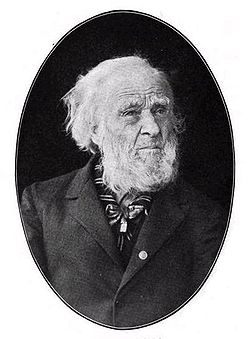
Hiram Cronk : Last Surviving Soldier of War of 1812
Hiram Cronk (April 29, 1800 – May 13, 1905) is listed as the last surviving veteran of the War of 1812 by the Department of Veterans Affairs. After serving with the New York Volunteers, he spent the rest of his life as a shoemaker. He was hailed as a hero by the state of New York and upon his death his body lay in state in New York’s City Hall. An estimated 25,000 people attended his funeral.
The Alamo:
James L. Allen (1815-1910) was dispatched from the besieged Alamo on April 5, 1836 to deliver this message to General Sam Houston: the garrison could not sustain another attack by the Mexican Army under General Antonio Lopez de Santa Anna. Allen is considered to be the last survivor of the Siege and Battle of the Alamo (Feb. 26 – Mar. 6, 1836).
Note* Twenty-two individuals are listed as survivors of the Alamo. Some of these men were dispatched as couriers; however, Allen was the last man dispatched by William B. Travis.
Mexican-American War:
Owen Thomas Edgar (June 17, 1831-September 3, 1929) was ninety eight years old when he died in a fall from a chair in the John Dickens Home, in Washington, D.C. The fall took the life of the last remaining veteran of the Mexican-American War (April 25, 1846 – February 2, 1848).
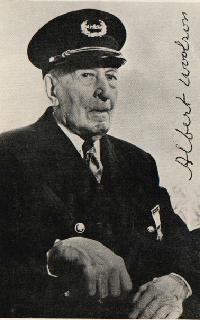
Albert Henry Woolson : Last Civil War veteran for the Union Side
Born in Philadelphia in 1831, Owen enlisted in the United States Navy in February of 1846 and served aboard several ships (Alleghany, Pennsylvania, Experience and the Potomac) until he was released from service on August 8, 1849. Due to his status as the last survivor on the Mexican-American War, he was honored by being interned at Congressional Cemetery in Washington, D.C.
Civil War (Union):
Albert Henry Woolson (February 11, 1850 – August 2, 1956). Although Woolson never saw service in the Civil War, he is listed as the last surviving Union soldier. Albert joined the 1st Minnesota Heavy Artillery just six months before the end of the war. Upon his death, President Eisenhower called Woolson the “…last personal link to the Union Army” as he was the last remaining soldier of the Civil War from both armies.
Civil War (Confederate):
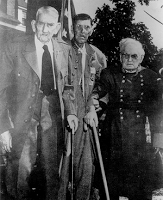
Pleasant Riggs Crump : Last soldier who fought on the Confederate side
Pleasant Riggs Crump (December 23, 1847 – December 31, 1951) is listed as the last Confederate soldier who fought in the Civil War. Crump enlisted in 1864 and served as a private with the 10th Alabama Infantry unit seeing front line action at the Siege of Petersburg and at Appomattox Court House. In an ironic twist, Pleasant Crump, the last Confederate soldier to fight against Abraham Lincoln’s Union Army, was buried in Lincoln, Alabama.
Spanish-American War:
Jones Morgan (October 23, 1882-August 29, 1993) left his Newberry County, South Carolina home at the age of 15 to join the United States Army’s 9th Cavalry, the famed, all black regiment of Buffalo Soldiers. He served as a cook, horse handler, and trainer for nearly a year when the Spanish-American War broke out (April 25, 1898-August 12, 1899). Jones served as a support soldier to the “Rough Riders” in Cuba, and personally tended the beloved horse of Theodore Roosevelt, Little Texas.
Before his death in 1993, Jones had the opportunity to meet with and be honored by General Collin Powell and President George H.W. Bush.
World War I:
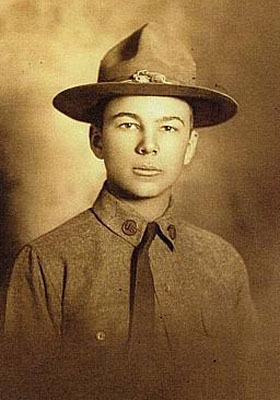
Frank Woodruff Buckles : Last Surving soldier of World War 1
Frank Woodruff Buckles (born Wood Buckles; February 1, 1901 – February 27, 2011) enlisted in the U.S. Army as a driver in 1917. He was sent to Europe’s front line during World War I, serving as a motorcycle messenger. He lived to be 110 years old and is considered the last survivor of World War I.
Late in his life, Buckles spent time in Washington, D.C., appealing to Congress and President George W. Bush for the renaming of the District of Columbia War Memorial to the National World War I Memorial. He subsequently became the oldest American to have appeared before Congress. His funeral at Arlington National Cemetery was attended by Republican Party leader Bob Dole, the great grandson of Winston Churchill, President Barack Obama, and Vice President Joe Biden.
